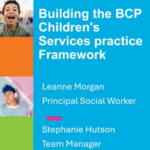Appropriate housing for an ageing society is as profound a challenge as climate change, a government official told this week’s National Children and Adult Services Conference.
Luke O’Shea, team leader, national strategy for housing in an ageing society at the Department for Communities and Local Government, said older families will constitute 48% of all new households by 2026.
He also said the number of older disabled people is expected to double by 2041 and the number with dementia is set to rise by 150% by 2051.
“We need to have a design revolution for housing for older people,” O’Shea said. “Poor housing is linked to poor health.”
To address this, the DCLG’s national strategy for housing in an ageing society, expected to be published on 4 December, will have 10 priority areas including:
• more homes, more choice
• lifetime homes and neighbourhoods
• better repairs and adaptations services
The inter-relationship between an individual’s physical health and environment cannot be ignored, he added. One person dies every five hours as a result of a fall and up to 50,000 older people die each winter because of poor housing. Additionally, poor housing results in care home admissions, he said.
O’Shea added: “As people grow older they think that old age is 10 years away. There is a Peter Pan complex that no one ever grows old. On average we will live 15 years with a disability but none of us can picture ourselves like that. But if we are going to change anything, then we have to accept that this is about us.”
Related articles
Help the Aged calls for action on older people’s housing
Is government’s dementia strategy good enough?
Essential information on older people’s services



 Bournemouth, Christchurch and Poole
Bournemouth, Christchurch and Poole  Hampshire County Council
Hampshire County Council  Oxfordshire County Council
Oxfordshire County Council  South Gloucestershire Council
South Gloucestershire Council  Wokingham Borough Council
Wokingham Borough Council  Webinar: building a practice framework with the influence of practitioner voice
Webinar: building a practice framework with the influence of practitioner voice  ‘They don’t have to retell their story’: building long-lasting relationships with children and young people
‘They don’t have to retell their story’: building long-lasting relationships with children and young people  Podcast: returning to social work after becoming a first-time parent
Podcast: returning to social work after becoming a first-time parent  How managers are inspiring social workers to progress in their careers
How managers are inspiring social workers to progress in their careers  Workforce Insights – showcasing a selection of the sector’s top recruiters
Workforce Insights – showcasing a selection of the sector’s top recruiters  Unlocking independence: how ASDAN gives care leavers choice and control over their future
Unlocking independence: how ASDAN gives care leavers choice and control over their future 

 Facebook
Facebook X
X LinkedIn
LinkedIn Instagram
Instagram
Comments are closed.